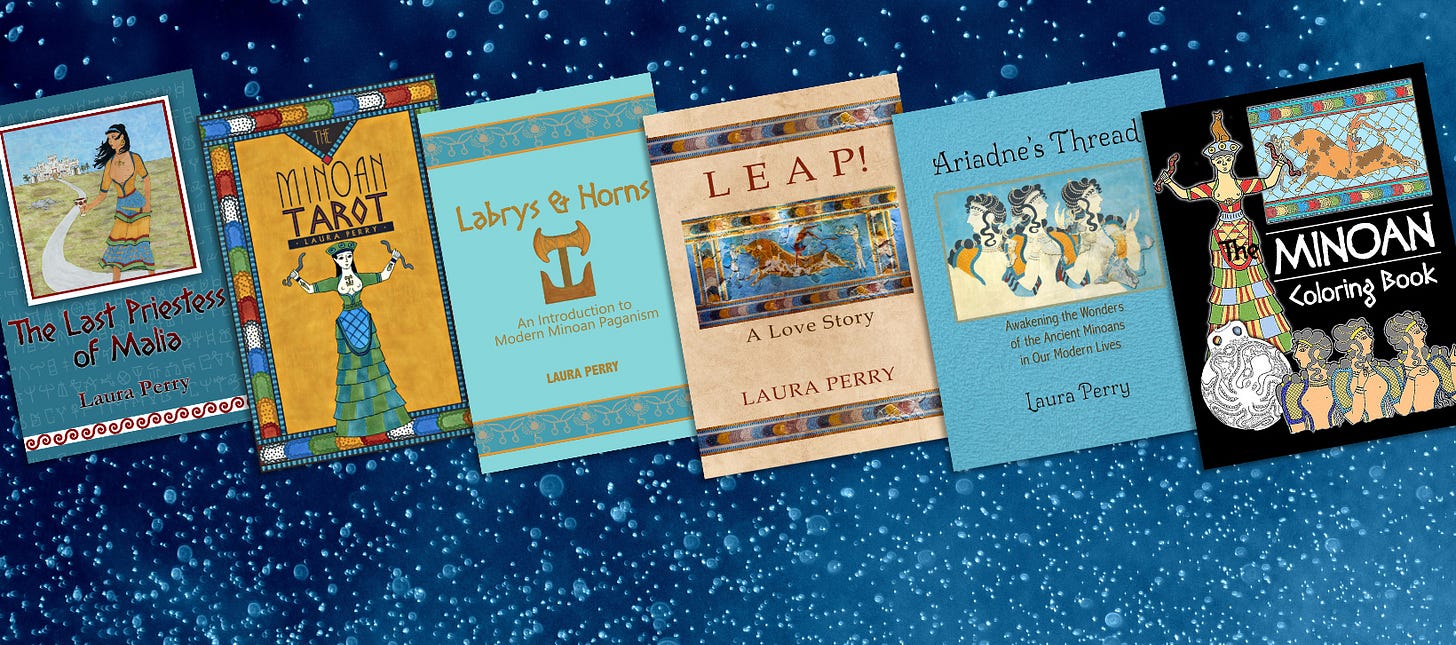Nudity is a highly charged subject in our society. But that wasn’t always the case, and that difference can make it challenging to talk about ancient clothing. Because we all have biases due to our culture, and those biases mean that we see clothing and the human body differently than the ancient Minoans did.
This week on the Minoan Path blog, I’m exploring Minoan clothing:
Minoan Clothing: Bronze Age Fashion, part one
It’s the first of two posts about the subject, and I began with “less” - the loincloths and the fully nude people in Minoan art. Because not wearing clothing was one way people dealt with the practicalities of a very hot climate and work like fishing and sailing, that often involved being bodily in the water. And kids, who trash every garment you put them in. Kids often went naked in warm weather. So much easier to clean up, in the era before running water and washing machines.
Then there are the famous open-front bodices in Minoan women’s clothing. It’s likely that their purposeful breast-framing design had sacred symbolism. Some Minoan women are also portrayed on seals as simply topless, wearing only skirts. Having chosen that level of attire myself on occasion at Pagan gatherings, I can tell you that it’s marvelously comfortable in hot weather.
This level of partial or total nudity was common in the eastern Mediterranean during the Bronze Age, not just among the Minoans but also in Egypt, the Levant, and Mesopotamia. And it meant nothing more than comfort in a warm climate.
The human body simply didn’t have the emotional charge and “eek immorality!” energy attached to it in that time and place.
But it’s hard for us, in a post-Christian world, to move past our culturally ingrained preconceptions. How much body shame do we all carry about our physical forms, courtesy of the combination of Calvinism and capitalism? What might our lives look and feel like if that wasn’t the case? What if standing naked in front of our own mirrors in the privacy of our own bedrooms wasn’t a challenge, sometimes or always? We don’t all have to go naked in the streets to begin to accept ourselves and each other in these material forms we’re suited up in.
I hear the term “body positivity” a lot. I like the idea, but honestly, I think what the Minoans and their neighbors had was probably more akin to body neutrality: You have a body. I have a body. They work, or don’t, for whatever activities we want them to do.
They’re simply there, letting us be with each other in this place and this time. And I, for one, am grateful that we’re able to be here together. Thank you for being here with me.
My Substack is free, but if you’d like to support my work (please and thank you!), you can find my books here and my art here and here.
About Laura Perry
I'm an author, artist, and creator who works magic with words, paint, ink, music, textiles, and herbs. I'm also the founder and Temple Mom of Ariadne's Tribe, a worldwide inclusive Minoan spiritual tradition. My spiritual practice includes spirit work and herbalism through the lens of lifelong animism. I write Pagan / polytheist non-fiction and fiction across several different subjects and genres. I'm currently working on an illustrated book of modern Minoan myths and a Minoan entry in the Moon Books Pantheons series (release date 26 August 2025). I’m also an avid gardener and living history demonstrator.







fascinating subject; I like the idea of our bodies simply being what they are, neutral, it might take some practice for me to stand in front of a mirror and feel that neutrality, its feels worth a try though!